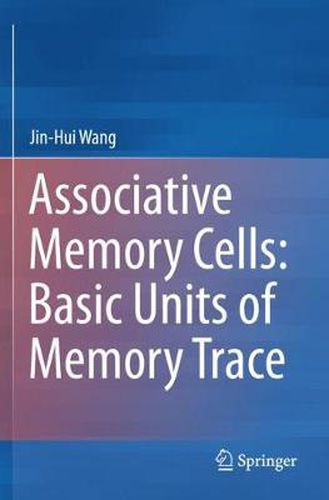Readings Newsletter
Become a Readings Member to make your shopping experience even easier.
Sign in or sign up for free!
You’re not far away from qualifying for FREE standard shipping within Australia
You’ve qualified for FREE standard shipping within Australia
The cart is loading…






This book focuses on associative memory cells and their working principles, which can be applied to associative memories and memory-relevant cognitions. Providing comprehensive diagrams, it presents the author’s personal perspectives on pathology and therapeutic strategies for memory deficits in patients suffering from neurological diseases and psychiatric disorders. Associative learning is a common approach to acquire multiple associated signals, including knowledge, experiences and skills from natural environments or social interaction. The identification of the cellular and molecular mechanisms underlying associative memory is important in furthering our understanding of the principles of memory formation and memory-relevant behaviors as well as in developing therapeutic strategies that enhance memory capacity in healthy individuals and improve memory deficit in patients suffering from neurological disease and psychiatric disorders. Although a series of hypotheses about neural substrates for associative memory has been proposed, numerous questions still need to be addressed, especially the basic units and their working principle in engrams and circuits specific for various memory patterns. This book summarizes the developments concerning associative memory cells reported in current and past literature, providing a valuable overview of the field for neuroscientists, psychologists and students.
$9.00 standard shipping within Australia
FREE standard shipping within Australia for orders over $100.00
Express & International shipping calculated at checkout
This book focuses on associative memory cells and their working principles, which can be applied to associative memories and memory-relevant cognitions. Providing comprehensive diagrams, it presents the author’s personal perspectives on pathology and therapeutic strategies for memory deficits in patients suffering from neurological diseases and psychiatric disorders. Associative learning is a common approach to acquire multiple associated signals, including knowledge, experiences and skills from natural environments or social interaction. The identification of the cellular and molecular mechanisms underlying associative memory is important in furthering our understanding of the principles of memory formation and memory-relevant behaviors as well as in developing therapeutic strategies that enhance memory capacity in healthy individuals and improve memory deficit in patients suffering from neurological disease and psychiatric disorders. Although a series of hypotheses about neural substrates for associative memory has been proposed, numerous questions still need to be addressed, especially the basic units and their working principle in engrams and circuits specific for various memory patterns. This book summarizes the developments concerning associative memory cells reported in current and past literature, providing a valuable overview of the field for neuroscientists, psychologists and students.